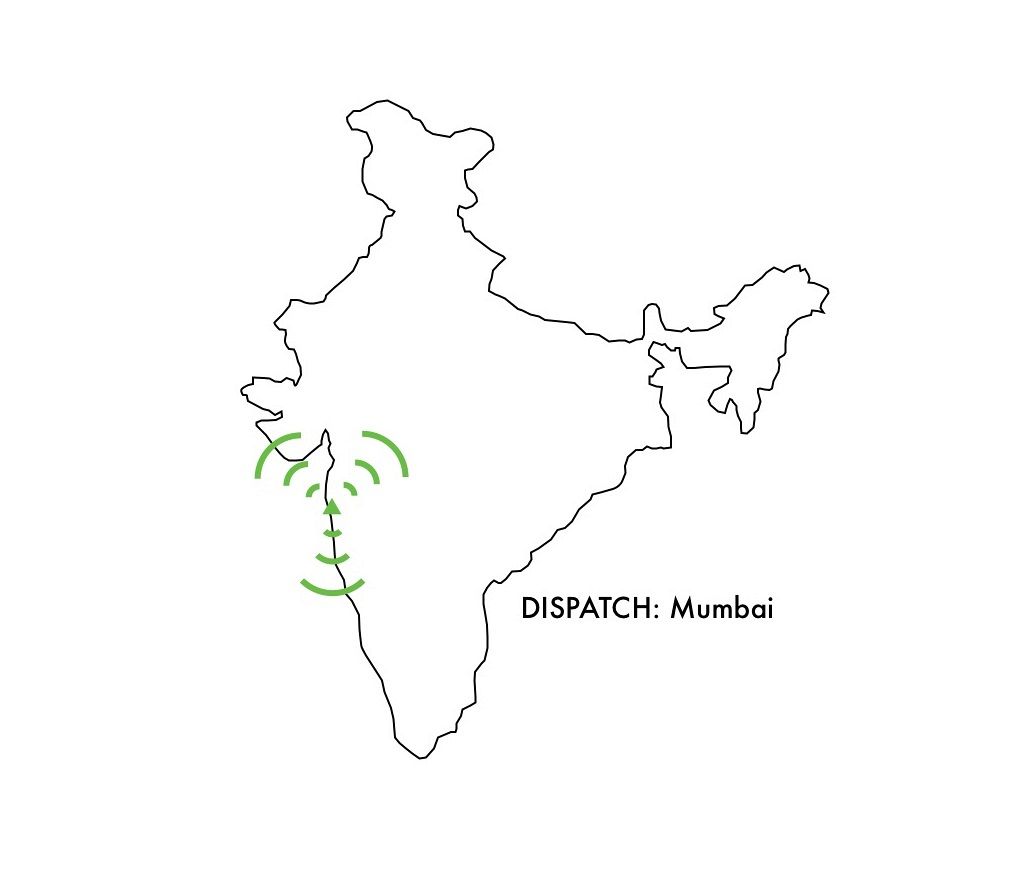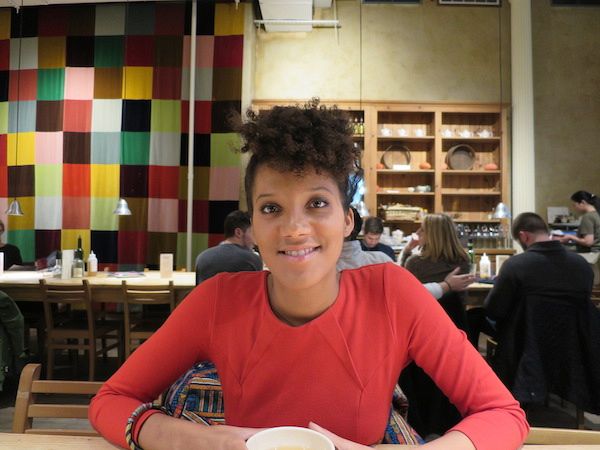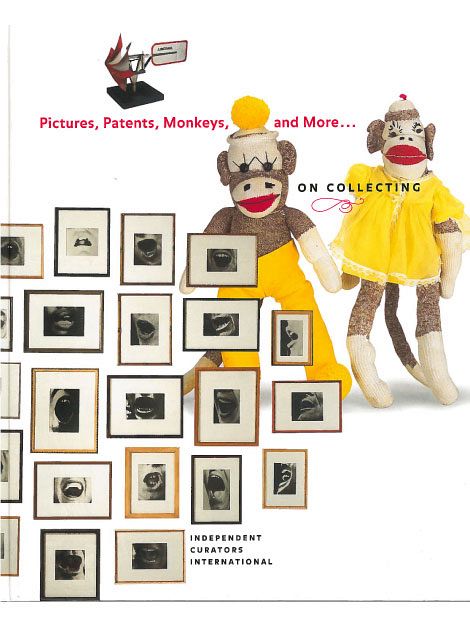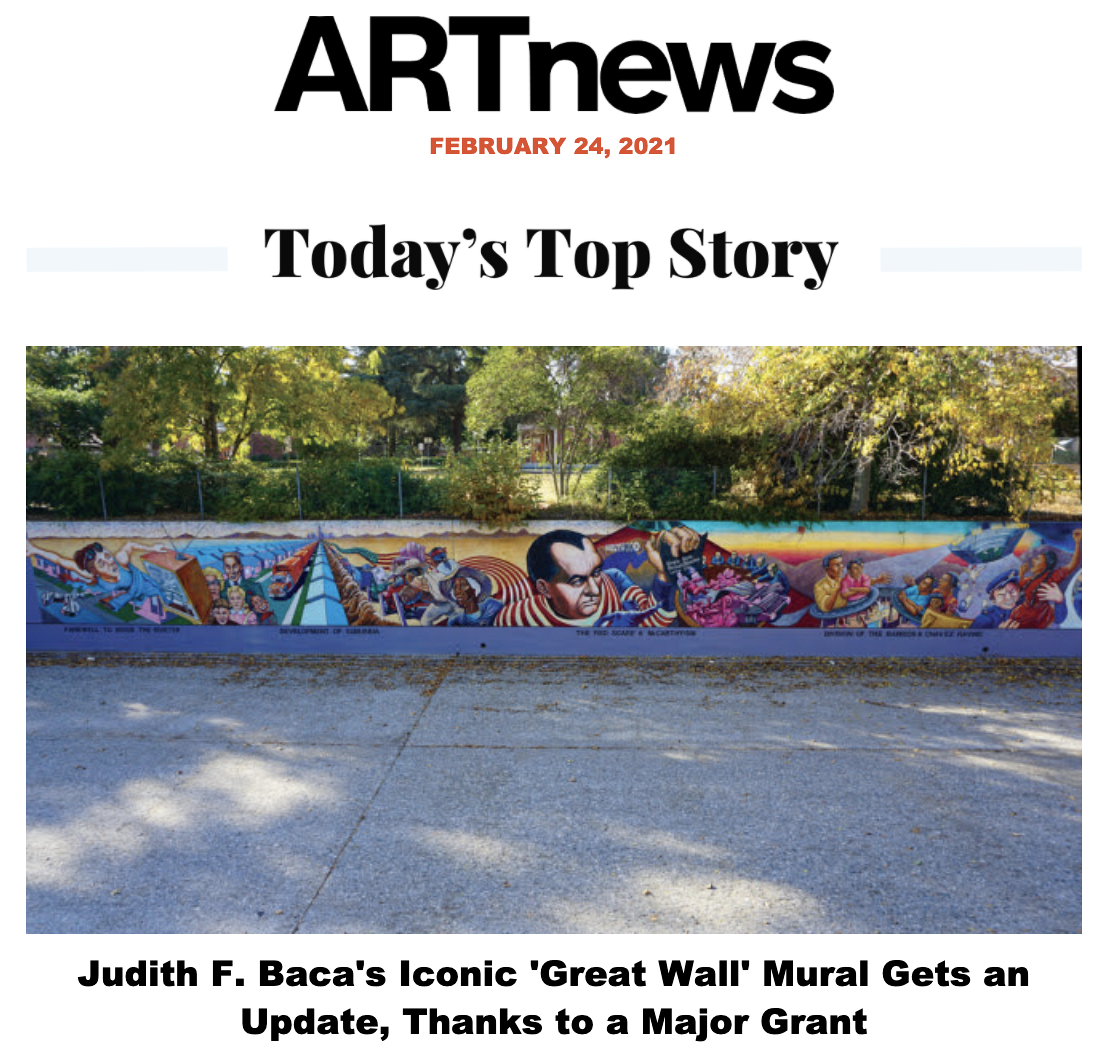I. Working across the Nth Fields
To our generation of cultural producers, location has long ago liberated itself from geography. We map our location on a transregional lattice of shifting nodes representing intense occasions of collegiality, temporary platforms of convocation, and transcultural collaborations. As we move along the shifting nodes of this lattice, we produce outcomes along a scale of forms ranging across informal conversations, formal symposia, self-renewing caucuses, periodic publications, anthologies, travelling exhibitions, film festivals, biennials, residencies, and research projects. This global system of cultural production takes its cue from the laboratory: as in all laboratories, the emphasis is on experiment and its precipitates. However, to the extent that this system is relayed across a structure of global circulations, it also possesses a dimension of theatre: a rather large proportion of its activity is in the nature of rehearsal and restaging.


In this DISPATCH, we would like to address the dilemmas as well as the potentialities of a mode of cultural production that is based on global circulations yet is not merely circulatory; and a mode of life that is based on transnational mobility but is not without anchorage in regional predicaments.
Everywhere and increasingly—whether we are teaching at a para-academic platform in Bombay, engaging in curatorial discussions or conducting research in Berlin, co-curating a biennial in Gwangju, contributing to an international exhibition in Karlsruhe, responding with critical empathy to a triennial in Brisbane, or developing a research project in Utrecht—we find ourselves working with interlocutors and collaborators in what we think of as nth fields. All nth fields have similar structural, spatial and temporal characteristics. In structural terms, these are receptive and internally flexible institutions, rhizomatic and self-sustaining associations, or periodic platforms. In spatial terms, these are either programmatically nomadic in the way they manifest themselves, or extend themselves through often unpredictable transregional initiatives, or are geographically situated in sites to which none (or few) of their participants are affiliated by citizenship or residence. Temporally, the rhythm of these engagements is varied: it traverses a range of untested encounters, from face-to-face meetings and discussions through email and Skype, and can integrate multiple time lines for conception and production.
These nth fields certainly throw into high relief the vexed questions that haunt the global system of cultural production: Who is the audience for contemporary global art? How may we construe a local that hosts, or is held hostage by, the global? Can we evolve a contemporary discussion that does not merely revisit the exhausted Euro-American debates of the late 20th century by oblique means? Is it possible to translate the intellectual sources of a regional modernity into globally comprehensible terms? What forms of critical engagement should artistic labour improvise, as it chooses to become complicit with aspirational and developmentalist capital and its managers across the world?
At the same time, these nth fields are optimal nodes for the staging of what the art theorist and curator Sarat Maharaj has described as ‘entanglements’1, the braided destinies that knot together selves accustomed to regard one another as binary opposites: colonising aggressor and colonised victim; Euro-American citizen and denizen of the global South; Occidental and Oriental; and so forth. A history delineated under the sign of entanglement lays bare the ideological basis of all fixed identities, conjoins them in sometimes discomfiting but always epiphanic mutuality. When such identities are thus unmasked, de-naturalised and dissolved, we are free to work out new forms of dialogue and interaction across difference, a new and redeeming solidarity.
In these complex circumstances, the architecture of belonging can never be static. In our own practice as theorists and curators, we have drafted different versions of it in different places. We have drawn on various models of emotionally and intellectually enriching locality, including the mohalla (an Urdu/Hindi word meaning a web of relationships inscribed within a grid of lanes, streets and houses), the kiez (a Germano-Slavic, specifically Berlin word, meaning much the same thing, and conferring on the resident the privilege of non-anxious belonging), the adda (a Hindi/Bengali term meaning a venue for friendly conversation and animated debate), and the symposium (not the academic format but its original, a Greek word signifying a drinking party that was also a venue for philosophical discussion).
Reference:
1. Sarat Maharaj, ‘Small Change of the Universal’ (unpublished keynote paper, delivered at the 1st Former West Congress, BAK/ basis voor actuele kunst on 5 November 2009). A video recording of Maharaj’s address may be viewed here.
II. Institutional Repetition, Participatory Recursion
There are two contending logics at work in the global system of cultural production. On the one hand is the institutional logic of repetition, associated with the venues of cultural production; on the other, the participatory logic of recursion, expressed by the agents of cultural production. The former generates a momentum of iterative continuity and a centripetal accumulation of authority (for example, the sheer editionality of Documenta, the Venice Biennale or the Whitney Biennale; and the continuous translation of alumni from various curatorial studies programs into the personnel in the cultural economy). The latter can produce self-critical disruption and a centrifugal diffusion of dissidence (for example, the successive curatorial ruptures and renewals of a biennial or other large-scale periodic exhibition; and the artistic, theoretical and curatorial radicalisations, although eventually absorbed within the system, of anti-aesthetic art, institutional critique, the anthropological turn, the pedagogical turn, the relational turn, and the emphasis on the archive).
The war of the logics is waged throughout the system: in successive editions of biennials, time-bound publication programmes, inter-disciplinary academic adventures, and grant cycles for research. As emphases shift and priorities change, the instrument of cultural policy reveals its hidden aspect as a punitive weapon. The result: orphan bodies of research, an archipelago of abandoned archives, and island universes of knowledge drifting in a discursive outer space. And all the while, the friction of practical politics—in the form of mass mobilisations, populist ideologies and mediatic manipulation—abrades the cultural domain. All this builds into an unfolding sequence of urgencies; to deal with this in a manner that is more than tactical and reactive, we have found it useful to assemble a provisional lexicon of urgencies.
III. Entries from a Lexicon of Urgencies
In a sense, we have already begun to unpack our lexicon while discussing the nth fields of contemporary global cultural production. In this section, we would like to share 11 selected keywords that help us articulate a response to the most pressing questions that impinge on our practice as theorists and curators, and serve as rubrics with which to manage our often unruly evidentiary material. We will move according to an internal logic or genealogy of concepts, rather than alphabetically, as we present these entries.


1. Critical transregionality
The postcolonial subjectivity—shuttling constantly, instinctively and spectrally between Bombay and New York, Lagos and Paris, Manila and Heidelberg—is heir to a condition that the Philippine novelist and nationalist Jose Rizal evocatively termed the ‘spectre of comparisons’, el demonio de las comparaciones. 2 Since the early 1970s, when scholars across disciplines began to question the authority of Euro-American master narratives, our discourse has been staged at a heightened level of this comparative mode. As the discourse produced by postcolonial theorists during the 1980s critiqued the perspectives and vocabularies of colonialism and imperialism, it dismantled the primacy of Euro-America. The global metropoles were turned into contested centres. The traditional and somewhat developmentalist centre-periphery model was gradually displaced by a model of the world where individuals, communities and nations are connected by surprising webs of information and unexpected alliances across borders. Today, we are all postcolonial.
In such a situation, the former periphery manifests itself as a garland of emergent off-centres. Various zones and regions across the world—situated largely in the global South but embracing dissident zones located in the global North—now assert what the cultural theorist and curator Okwui Enwezor has described as their “wills to globality”.3 Equipped with this insight, our interest is to remap the domain of global cultural experience by setting aside what seem to us to be exhausted cartographies variously born out of the Cold War, area studies, late-colonial demarcations, the war on terror, or the supposed clash of civilisations. In place of these specious cartographies premised on the paradigm of the ‘West against the rest’, we propose a new cartography based on the mapping of continents of affinity, and a search for commonalties based on jointly faced crises and shared predicaments.4 The crucial performative move here is an ethical, political, aesthetic willingness to demonstrate complicity in the crisis of the Other. We call this ‘critical transregionality’. 5 We would identify this tendency in the practice of artists like Nina Fischer & Maroan el Sani6 7, Dolores Zinny & Juan Maidagan8, Shaina Anand9, Ashok Sukumaran10, the CAMP platform11 12, and the PeriFerry translocal initiative13, with whom we have collaborated or been engaged in dialogue.
References, Links & Images:
2. Cited in Benedict Anderson, The Spectre of Comparisons: Nationalism, Southeast Asia and the World (London: Verso, 1998)
3. Okwui Enwezor, The Black Box, in exh. cat. Documenta 11_Platform 5/Kassel (Ostfildern-Ruit: Hatje Cantz, 2002), p. 47.
4. Nancy Adajania, ‘Time to Restage the World’, in Springerin Issue 1/2010 (Vienna, January-March 2010)
5. Ranjit Hoskote, ‘Signposting the Indian Highway’, in Hans Ulrich Obrist, Julia Peyton Jones and Gunnar Kvaran eds., Indian Highway (Köln, London & Oslo: Verlag der Buchhandlung Walther König, Serpentine Gallery & Astrup Fearnley Museum, 2009)
6. Nina Fischer & Maroan el Sani, ‘Spelling Dystopia’
7. Nina Fischer & Maroan el Sani, ‘Radio Solaris’
8. Ranjit Hoskote, Zinny & Maidagan: Compartment/ Das Abteil (Frankfurt & Köln: Museum für Moderne Kunst & Verlag der Buchhandlung Walther König, 2010)
Extracts here.
9. Nancy Adajania, ‘Probing the Khojness of Khoj’, in Pooja Sood ed., The Khoj Book: 1997-2007, Contemporary Art Practice in India (New Delhi: Harper Collins, 2010)
10. Nancy Adajania, ‘Night Practice’ (in exh. cat. for Ashok Sukumaran’s exhibition, ‘Glow Positioning System and Other Forms of Address’; New York: Thomas Erben Gallery, 2008)
11. The CAMP platform
12. Wharfage.
13. The PeriFerry translocal initiative.
2. The Dividual Self
We construe the dividual self (the inflection owes much to Deleuze) as a locus of agency that reflects on the constituents of its consciousness, and on the contexts of its material and symbolic actions, while pursuing a trajectory through its lifeworld. Such a self asserts the power to re-imagine its trajectory, and to affect the ambient circumstances of its lifeworld. By a seeming paradox, such a self marks its specificity precisely by recognising itself as a dividual entity: one composed of multiple contending histories, ancestries and narratives, and choosing its identity by engaging with these – and not by asserting itself as an in-dividual singularity, which can achieve an identity only by denying, constricting or abolishing the multiplicities of which it is made.
A larger theme, for us, is that of the performative commitment by which such figures stake out a transitive space between cultural extremes and political binaries, untainted by essentialism or romanticisation. The dividual self appreciates, even if it cannot always reconcile, the paradoxes, ambivalences, ironies and indeterminacies attending its choices. The dividual self is not an individual in the procedural sense of secular modernism, but rather, is an agency that can imagine itself out of its restrictions. Various figures, retrospectively identifiable as dividual selves, have played stellar roles in mounting critiques of the deficits of modernity (Gandhi, Freud), the pathologies of instrumental reason (Jung, J Krishnamurti, Wittgenstein), and the colonial-imperialist or industrial-military world system (Tagore). 14
References, Links & Images:
14. Ranjit Hoskote, ‘Walking Through Mirrors? Reflections on the Spiritual Traffic between India and Europe’, in Angelika Fitz, Merle Kröger, Alexandra Schneider and Dorothee Wenner eds., Import Export: Cultural Transfer, India, Germany, Austria (Berlin: Parthas Verlag, 2005)
3. Emplacement


In the era of globalisation, it has become the norm to privilege the anxiety of displacement, and consequently to valorise the nomadic practices of artists who travel, produce and display art at international residencies and on the biennale circuit. In contrast to this narrative of chronic dispossession, we would argue for artistic practices that take up the challenge of formulating an experimental belonging in various locations. While many curators and artists fetishise the politics of going away, we believe in confronting the politics of staying on and staking claim. Critical emplacement, in our account, occurs when artists position themselves responsively in locations within or outside their own society, recognising that it is crucial to engage with the history of the chosen site and forge new social relationships and inter-disciplinary accounts around it. Thus, critical emplacement acts as a destabilisation and constant renewal of the frameworks of making, viewing, sharing and discourse.15
References, Links & Images:
15. Nancy Adajania, ‘Another Look at Displacement: Emplacement versus Emplasure’ in exh. cat. ‘Displaced Self' (Bombay/Tel Aviv: Sakshi Gallery & Artists’ Residence Herzilya and Sea Gallery, 2003). Also, Nancy Adajania, ‘The Thirteenth Place: Positionality as Critique in the Art of Navjot Altaf’ (Bombay: Marg, forthcoming/ 2011)
15a. Belle Shafir, Clone R US, 2009.
15b. Navjot Altaf, Memoirs, 1975-2008, Digital photographs (6) , 9 3/4" x 14 3/4" each.
4. Heaviness
Artists or theorists who take the city as their primary preoccupation must confront the occupational hazard of having viewers gloss their work with the familiar templates of urbanism.16 The name-check trips off our tongues with little effort: beginning with Baudelaire and Walter Benjamin, we move rapidly on to Foucault, scroll down to Hardt and Negri, and shuffle Calvino with Mike Davis while holding on to Saskia Sassen and Arjun Appadurai for reflective pause. The nimble-footed flaneur is our mascot on these journeys, guiding us patiently through the Borgesian labyrinth of a city that could be located anywhere on this densely networked yet persistently enigmatic planet. And the angels of nomadism are always at hand: they come bearing gifts of lightness, promising to deliver us into a gravity-free future, a situation that we enjoy even as we deplore it in all the right forums.
When discussing the urban conditions of mobility and migration, we tend to favour lightness over heaviness: we privilege vectors over scalars, direction over magnitude. In reducing lightness to a virtue lite, we have forgotten that it is a phenomenon that has been theorised by numerous philosophers and novelists who have dedicated themselves to demarcating the optimal conditions of selfhood. The Yogic masters conceived of lightness as an emancipation from unskillful thoughts, the traces of sensations and the burden of attachments. J Krishnamurti made lightness the centre-piece of his teaching, articulating it through the concepts of dying to the past and achieving freedom from the constraints of the known and repetitive patterns of thought. In his 1984 novel, The Unbearable Lightness of Being, Milan Kundera frames lightness as a negative form of liberation from the inscriptions of fate, history, inheritance and responsibility. In his undelivered lectures, Six Memos for the Next Millennium (1993), Italo Calvino presents it as one of the most important values of writing. None of these positions on lightness is interchangeable with the others; each has a specific lineage and application, and yet, taken together, they propose various critiques of psychological heaviness, the earth-bound nature, and the dragweights of unrefined existence.
Defying these authoritative validations—and perhaps our own good sense!—can we affirm the properties of the opposite virtue, that of heaviness, and reconsider our preconceived negativity towards it? Is heaviness an inert property without agency, more acted upon than active, a lead balloon guaranteed to sink rather than to fly lightly with an angel’s wings? Can we rephrase heaviness, turn around the popular perception that images it as lead-like and saturnine, and instead see it as manifesting the enabling principle of gravitas? We use gravitas deliberately, because this Latin etymology for the condition of heaviness allows us to point up many of its connotations: slowness, magnitude, mass, position, the weight of historical and personal memory, dignity, the stillness of melancholia, and the monumentality of the spectacular. There is a case for regarding heaviness as an anchor that keeps us committed to the world’s regional histories, each incarnating a specific entanglement between home and elsewhere, point of reference and vanishing point, each with its own intellectual and artistic sources of a regional modernity.17 18
References, Links & Images:
16. Nancy Adajania, ‘The Unbearable Heaviness of Being: Parables of a 21st-century Nagrik’ in exh. cat., ‘Amusement Park’ (Bombay: Gallery Chemould Prescott Road, 2010)
17. Nancy Adajania, ‘New-Context Media: A Passage from Indifference to Adulation’
18. Shuddhabrata Sengupta, ‘The Delhi Declaration of a New Context for New Media’ which employs Nancy Adajania’s concept of a ‘new-context media’, in Lipika Bansal, Paul Keller and Geert Lovink eds., In the Shade of the Commons: Towards a Culture of Open Networks (Amsterdam: Waag Society, 2006)
5. Convocation
Travel can lead to the insight of direct encounter: to the dismantling of canonical criteria, long-established conventions of viewing and representation. It can help the cause of de-exoticising the ‘Other’ as subject of inquiry or object of desire and display. It can help restore suppressed or excluded contents. It can make for a confluence of energies and perspectives. At the same time, as is well known, it can produce a dichotomy in the reception of contemporary cultural practice: a schism between mobile publics that travel constantly from one transnational venue to another and anchored publics that embrace a notion of the local that can be defensive at best and parochial at worst. We must develop new forms of convocation, as we activate conversations between mobile publics and anchored publics around contemporary international cultural practice. This would help participants across the globe to shuttle between regional histories and global histories, re-orienting themselves from one narrative to the next.19
What might we discuss at these convocations? The power of infinitives, perhaps: to disclose the complicities between an official contemporary and its unacknowledged cousins; to celebrate the carnivalesque; to document the half-forgotten; to allude to elusive historical realities; to annotate our encounters. We work between the incessancy of theoretical articulation and the riddle-like silence of history; between the volatile rhetoric of political elites and the absolute secrecy of the strategic operations through which they exploit the planet. Our convocations could help generate modes of comprehending, critiquing, and resisting these opposite hazards. They could rescue us from being conscripted in the cause of a single past or mortgaged to a single future.20 To us, the Dictionary of War project has evolved as a most productive example of the convocation. 21
References, Links & Images
19. Ranjit Hoskote, ‘Scales of Elaboration’, in Okwui Enwezor ed., Annual Report: The 7th Gwangju Biennale (Gwangju: Gwangju Biennale Foundation, 2008)
20. Ranjit Hoskote, ‘Biennials of Resistance: Reflections on the Seventh Gwangju Biennial’, in Elena Filipovic, Marieke van Hal and Solveig Øvstebo eds. The Biennial Reader (Ostfildern-Ruit & Bergen: Hatje Cantz & Bergen Kunsthall, 2010)
21. Dictionary of War
6. Transient Pedagogy
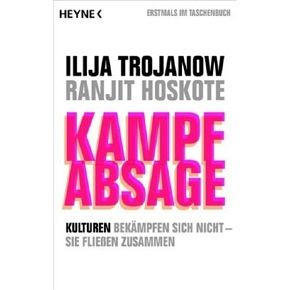
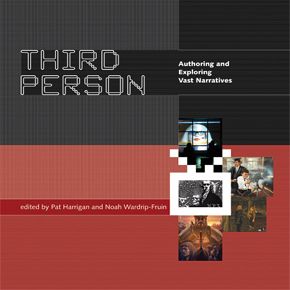
By transient pedagogy—which we regard as a key mode for the replenishment of a position of critical transregionality—we mean the constant process of learning by which travellers negotiate terrains that can transform themselves radically and without warning. Implicit within such a pedagogy is the project of recovering alternative and anterior histories of dialogue and mutuality. We use these to disclose the hidden genetic strains of contemporary cultural selfhood. In place of the scalars of traditional history, we privilege the invisible vectors that have effected historical transformations on both an epic and an intimate scale through the centuries, and continue to do so. Through transient pedagogy – named that because its procedures are provisional, tactical and adventurous – we may achieve the disclosure of alternative starting-points for the global contemporary. We gain the freedom to make multilateral connections, possibly even recover pre-modern and pre-colonial connections, and develop new and de-territorialised cartographies.22
Can we imagine a world that had other centres than New York, Brussels, Zurich and Shanghai? Can we conceive of a polycentric world governed from Agra, Beijing, Palermo, Damascus, and Mexico City; and whose financial centres were Basra, Bremen, Venice and Alexandria? But this is what the atlas of the world—without Mercator’s distortions—would have looked like, during the period 1300-1800.23 Transient pedagogy looks, for instance, at the connection between Syria and Sinkiang across the Silk Route; at the linkages between Cochin, Venice and Nuremberg through the Indian Ocean pepper trade, or the imaginary line between Eastern India and South-east Asia, along which merchants, scholars, storytellers and adventurers sailed across, carrying the Ramayana as well as Hindu and Buddhist thought. It lets us retrace the trade connections between Antwerp and Surat during the Mughal period: this 17th-century trade was based on luxury items like diamonds, carpets, shawls and silverware. A less well-known story of exchange during this period involves Rembrandt’s archive of Mughal drawings, works that would have come from the ateliers of the Mughal empire, and the corresponding flow of European paintings to the Mughal courts.
Transient pedagogy is proposed as a mutable model, one that has an in-built, self-disruption device. Rather than founding an institution and then instituting pedagogy within it, we would begin in reverse, with a pedagogy that can be constantly re-evaluated and refined. While conventional pedagogies are based on master narratives, transient pedagogy would encourage the production of what, following Harrigan and Wardip-Fruin (2009), we would call ‘vast narratives’. These are a cross-media phenomenon, evolving through the translation of material from one medium to another, extending in duration across considerable spans of time, and re-distributing memory over a series of caches. Vast narratives, in our framework, would be forms by which deep memory can be relayed and kept in play by diverse means, so that the hybridities of the past can be transmitted into the present.24
In the process of developing a transient pedagogy, we would also consider a variety of prior models of the production of knowledge, including oral transmission (the Upanishads), peripatetic journeys (Socrates, Plato), dialogues (the Buddhist Milinda-panha or ‘The Questions of Menander’), so that we may remind ourselves that academic inquiry was originally meant to free knowledge and make it available and refine the self, not to lock it down and hoard it. The methods of pre-modern philosophy may have been provisional and mercurial, but they were intended to transform the consciousness: these are values worth recovering for our present confrontations with the world.25
References, Links & Images
22. Nancy Adajania, ‘Time to Restage the World’, in Springerin Issue 1/ 2010 (Vienna, January-March 2010)
http://springerin.at/dyn/heft_text.php?textid=2303&lang=en
23. Ilija Trojanow and Ranjit Hoskote, Kampfabsage (Munich: Random House/ Blessing Verlag, 2007)
24. Pat Harrigan and Noah Wardrip-Fruin eds., Third Person: Authoring and Exploring Vast Narratives (Cambridge, Mass.: MIT Press, 2009)
25. Ranjit Hoskote & Nancy Adajania, in Youngchul Lee and Henk Slager eds., NJP Reader #1/ ‘Contributions to an Artistic Anthropology’ (Seoul: Nam June Paik Art Center, 2010)
http://njp.kr/root/html_eng/Journul/pdf/NJP%20Reader1Eng%28web%29_27Jan2010.pdf
7. Geniza
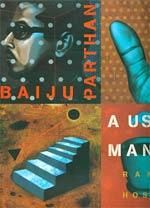
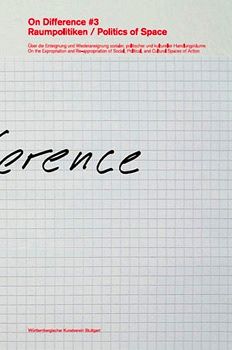
We regard the geniza as a particularly rich and potent metaphor for practice. It was originally a store of documents, a granary of contracts, prayers, family records, transactions and documents, maintained by the Jewish mercantile communities of Egypt, especially in Cairo and Alexandria. We have been fascinated by the aleatory possibilities that this form of aggregation enfolds within itself, suggesting a model of research that is constantly alive to surprise and discovery. The geniza is a collection of materials that have not been arranged or annotated; a repertoire that can constantly be drawn on, culled from, extended. Importantly, it is not an archive. Rather than submitting, however provisionally, to the hegemony of annotation, it remains always charged with the possibility of chance encounters and dynamic collisions among its elements, in a state of surplus, of imaginative excess.26
In the context of contemporary cultural production, we find the geniza principle operating in many intellectual, literary, artistic, and curatorial practices. The geniza principle invites us to take a more inclusive view of cultural practice: one that embraces the visibility of the book launch, the gallery opening and the museum project as well as the unseen life of the studio. We would see that our publications and exhibitions are the public outcomes of an invisible economy of constant reflection, compilation and sifting, a private collection of reading lists and transcripts, video footage and document scans, Net grabs and magazine clippings. The public manifestation and this invisible economy form an ensemble: the loop by means of which many contemporary cultural producers can hold themselves in reserve without being spent; and can perform without exhausting or over-exposing their resources, constantly re-editing, re-collaging, additively re-composing, and aggregating their articulations.27 28
References, Links & Images
26. Ranjit Hoskote, Baiju Parthan, A User’s Manual (Bombay: Afterimage, 2006)
27. Nancy Adajania, ‘In Aladdin’s Cave: Digital Manipulation and Transmutation of the Urban Image in India’, in On Difference # 3: Politics of Space (Württembergischer Kunstverein Stuttgart, 2008) and in Import Export: Cultural Transfer (Berlin: Parthas Verlag, 2007)
28. Ranjit Hoskote, ‘Nemo/ No-man/ Nomad: Collegial Reflections on the Raqs Media Collective’ (2004)
http://www.raqsmediacollective.net/images/ranjit_essay.pdf
8. Detour
Polonius, whose advice in Hamlet is often long-winded and misplaced, has one precise piece of counsel: “By indirections, find direction out.” Taking this for our cue, we often find it immensely fruitful to cover the apparently well-mapped ground of histories again, navigating by uncharted routes and unlisted landmarks, prising up secret lodes of knowledge, pausing for unscheduled meetings with augurs and cunning informants, making longer journeys through the landscape than were officially necessary. The detour, to us, is a productive trope of digression, self-interrogation and re-dedication.29
References, Links & Images
29. Ranjit Hoskote, ‘Detour: Five Position Papers on the Republic’ (Bombay: Chemould Prescott Road, 2009)
http://www.mattersofart.net/features/features256.html
9. Jujitsu
Jujitsu is the gentle art of allowing your opponent to yield ground. The unpromising Cold War congress hall, the rundown neighbourhood in the process of gentrification, the sumptuous but sinking palace on the canal, the reading list-powered approach to an exhibition, the sceptical school, the idea-proof faculty or museum bureaucracy: Which of us has not been confronted by these or similar problems? Enthuse where reason fails, neutralise by inclusion, shock by agreement. Stand ready to fly, let your opponent barrel into you, turn around in a graceful arc, and move on, opponent left behind.30
References, Links & Images
30. Nancy Adajania (ed.), Shilpa Gupta (Munich/ New York: Prestel, 2010)
http://www.randomhouse.de/book/edition.jsp?edi=330308
10. The Agoratic Condition
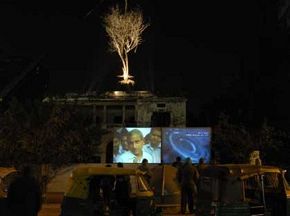
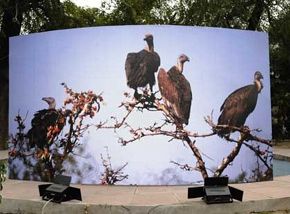
Is public art a universally executable program; or is it a potentiality, for which a specific course must be negotiated in specific public spheres, which are necessarily regional? We have asked ourselves this question many times, in India, during the last couple of years. To perform one’s citizenship in reality rather than have nominal possession of it in a country like India, we would have to define the nature of our public sphere – where discussions between opposed interests can be held freely and fairly. As the curator and critic Simon Sheikh observes, there is no unitary public sphere, there are oppositional tendencies in the public sphere. What then is the nature of such a fragmented public sphere, and how do we negotiate it? Would we take a cue from Belgian political theorist Chantal Mouffe’s much-cited model of the public sphere, in which, as she says, “the aim of democratic institutions is not to establish a national consensus in the public sphere but to defuse the potential of hostility that exists in human societies by providing the possibilities for antagonism to be transformed into ‘agonism’.”31
While Mouffe’s agonistic model of the public sphere appears at first sight to correct the somewhat colourless abstraction and optimistic tenor of the early Habermas, closer scrutiny reveals that her understanding of the contemporary public sphere is almost more clinical and Newtonian than his. Mouffe presents us with an image of fractious interests, irreconcilably opposed and yet able to hold one another in an embrace of amicable enmity. Further her model emphasises respect between irreconcilable positions rather than a productive bridging and melding of differences. This may not be applicable to our context, which is highly volatile at a social and political level.
In her writings and lectures on the subject, Mouffe rarely condescends to describe the humdrum mechanisms and legislative protocols by which her supposedly radical politics is to be underwritten. When she does, her account is in no detail different from the checks and balances of constitutional democracy as we now know it. Mouffe’s theoretical sleight of hand is remarkably unhelpful when it comes to addressing the crises, dilemmas and the often schismatic turbulences that attend transitional societies, such as India, Sri Lanka, Pakistan, Turkey, Nigeria, Indonesia, Thailand, and South Korea, to name only a few. In these situations, the public domain is a scene for the battle among forces whose agenda commits them to mutual exclusion and sometimes even mutual annihilation. There is often radical disagreement on how to interpret the national past and the national future, on how to distribute power and authority, and what the nature of the State should be. In some of these situations, also, positions are taken on the basis of tactical opportunity and short-term gain rather than on that of long-held principle or reasoned conviction; where vote-bank politics, illiteracy, famine and cultivated regional asymmetries prevail, the ground of politics resembles a quicksand more than it does the floor of a debating room. As applied to such complex predicaments, Mouffe’s theories are about as useful as a Lego set to the building of metropolis.
Instead, we could propose the model of the agora: the marketplace that is also a meeting place, a shifting weave of textures of thought, opinion, ideas and convictions; a non-hierarchical space of exchange where thought is multiplied and extended by distribution rather than imparted from a fixed source of authority. The agora of the classical Greek city-state was also, etymologically, the ‘open space’, where merchants, sailors, soldiers, artists, writers, priests, oracles, and madmen congregated and could voice themselves.
In this spirit, we could explore what Ranjit Hoskote has called ‘the agora function of public places’. According to Hoskote, public places are hybrid sites produced by the “popular re-inscription of public space” – sites that are liminal, allowing for shifts and transformations of identity, where the individual interacts with “the group, the crowd, even the mob”, and where the various constituents of society stage and perform their symbolic realities. This is where claims and transactions of different degrees of intensity are proposed, considered and sorted through, by a changing cast of actors. By intervening in public places, by activating and working with the agoratic condition, practitioners of public-art possibilities may well demonstrate an apparently simple but nevertheless startling truth.
Namely: that an art which addresses the public domain as site and resource is nothing less than a means of reclaiming the contours of performative citizenship. It is a wager on the renewal of fossilised democracy by the insurgent imagination. It is through the pursuit and desire of the agoratic that we will be able to produce new forms of associations and new ecologies of dialogue.32
References, Links & Images
31. Nancy Adajania, ‘Public Art? Activating the Agoratic Condition’
http://www.rsaartsandecology.org.uk/magazine/features/nancy-adajania--public-art (2009)
http://www.cacsa.org.au/cvapsa/2010/7_39.3/39.3_Adajania.pdf (2010)
31a. Barakhamba in 2008, installation by Navjot Altaf, 48°C Public Art Ecology Delhi 2008.
31b. Extinct? Installation by Ravi Agarval, 48°C Public Art Ecology> Delhi 2008
32. Nancy Adajania, ‘The Sand of the Coliseum, the Glare of Television, and the Hope of Emancipation’, in Sarai Reader 06/ Turbulence (New Delhi: Sarai-Centre for the Study of Developing Societies, 2006)
http://www.sarai.net/publications/readers/06-turbulence/02_nancy.pdf
Also published in German translation, as ‘Der Sand des Kolosseums, der grelle Schein des Fernsehers und die Hoffnung auf Emanzipation’ in Documenta Magazine No. 2/ Life! (Kassel: Documenta 12, 2007)
http://www.documenta12.de/fileadmin/pdf/Mag2_1bis11_web.pdf
11. A Contributory Ethic
Considering that collaboration has become the invariable basis of early 21st-century art—in a highly networked world, with protocols of interaction and production systems bringing together artists and curators, as well as translators, technicians, scenographers, architects, and specialists of all kinds, it is urgent that we evolve a contributory ethic that recognises and credits the often invisible forms of labour that nourish the process of cultural production, and indeed, make it possible.
We have found it useful to take a detour through Buddhist ethics while approaching this subject. The Buddha teaches that individuals, who can acquiesce in their own degeneration, can also reconstruct themselves by the perfection of understanding and purpose; of speech and conduct; of occupation and effort; of attention and meditation. Inspired by this teaching, the aspirant along the Buddha’s path takes up residence in the four states of consciousness celebrated as the brahma-viharas or sublime abodes. These are maitri, karuna, mudita and upeksha: loving-kindness, compassion, joy and equanimity.
Elaborating on these states in his commentary, the Visuddhi-magga (The Path of Purification), the scholar Buddhaghosha points out that they are a practical means by which the individual may step out of his narrow individuality to realise the larger oneness of life. From the attitude of maitri, loving-kindness towards all, non-possessive love, is born karuna, compassion: it takes the active form of empathy with those who suffer, who have lost hope, who are sunk in anguish. As a condition of understanding, karuna melts down all the barriers of separateness. It leads, also, to mudita, a sharing in others’ happiness, a joy in others’ joy, the renunciation of envy and malice. Finally, having shared in the emotions of others, the meditator enters upon a condition of serene detachment, upeksha. He responds to the world neither with attachment nor with aversion; he stands quiet witness to the flow of events, watching with equanimity as every action brings into being its own series of consequences, and passes into the kaleidoscopic pattern of life.
This implies a gradual transformation of the individual through the overcoming of the lower nature from which we habitually operate: that hard-wired genetic nature which registers our bondage to the reflexes and instincts we inherit from our primate past or acquire while surviving in human society. The cultivation of the sublime abodes constitutes, therefore, a deliberate going against the grain of our usual behaviour, a shift from the conception of selfish survival to the conception of fulfilment based on altruism and interconnectedness. This is why the brahma-viharas are spoken of, in Buddhist tradition, as apramana, immeasurable, infinitely extensible, always in a state of surplus: for they are intended as a means by which the practitioner can reach out to all sentient beings, all creation.
While we have the choice to live in delusion and act destructively towards ourselves and others, the Buddha and his inheritors—teachers like the Dalai Lama, U Ba Khin, Ayya Khema, Sangharakshita and Thich Nhat Hanh—recommend another course. They urge us to reflect on our unconscious motivations and on the acts to which we commit ourselves. They remind us that our agitated lives are conducted by reference to habit and circumstance; we do not act independently, but merely react to stimuli. They suggest that we can liberate ourselves from destructiveness and delusion; that our lives would be better fulfilled if we were guided by loving-kindness, compassion, joy in others’ joy, equanimity and sensitivity to the sufferings of others.
The dynamic of the brahma-viharas connects two projects together: on the one hand, the individual practice of cultivating creative, skilful and constructive states of mind; and on the other, the responsibility of translating this individual practice into a collective practice in the larger community. This passage from the refinement of the individual consciousness to the sharing of such a refinement in the sphere of interrelationship is automatically a political act. It dissolves all limiting structures: the hierarchies in which political relationships are constructed, the circuits through which social identities are organised and cultural values allocated. It acts against the asymmetries that are implicit in these collective arrangements: asymmetries of opportunity and entitlement; of privilege and recognition; imbalances in the distribution of resources and the control of terrain, such that some classes, races, regions and species dominate others.
From the viewpoint of practice, how can we negotiate these asymmetries, or even begin to think of dissolving them? The practice of the brahma-viharas, in these circumstances, cannot be confined to mere sympathy, sentimental pity, or condescending charity. It can be meaningful only when practised in active mode as an empathy with those in anguish and lacking in the resources of hope, and as a renewal of altruistic action. In such a predicament, the practice of the brahma-viharas becomes a praxis, an affirmation of solidarity: a mode of reaching out to others that is premised on the empathetic recognition of those in states of oppression. So articulated, the practice of the brahma-viharas becomes the basis for the possibility of constructive resistance in many areas of political engagement and endeavour. It allows for the formation of positive associations across lines of interest and orientation, of alliances across a spectrum of oppressed or threatened groups, such as the industrial and rural proletariats, workers in the unorganised sector, ethnic minorities, ecological refugees and endangered species. And so this Buddhist detour brings us back to a space of engagement where we must redefine our subjectivity and our practice constantly, at the shifting point that marks where the cultural and the political knot across one another.33
References, Links & Images
33. See Ranjit Hoskote, ‘Four ways of embracing the world’ (The Hindu/ Folio: ‘Reaching Out’, Chennai: 8 April 2001)
http://www.hinduonnet.com/folio/fo0104/01040120.htm
